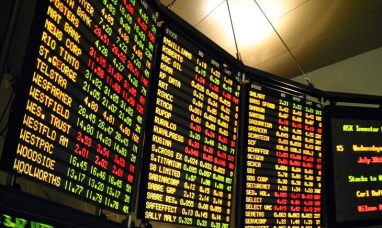U.S. markets climbed to fresh records this week as Fed rate cut expectations strengthened. The S&P 500 advanced 0.4% on Friday, the Dow Jones Industrial Average gained 93 points, and the Nasdaq Composite jumped 0.7%. The rally followed weaker-than-expected U.S. jobs data, which spurred investors to anticipate that the Federal Reserve could move to reduce rates as early as its September meeting.
The bond market signaled even stronger conviction. Treasury yields tumbled after the government reported just 22,000 new jobs in August. While the slowdown highlights fragility in the labor market, it has not yet raised alarms of an imminent recession. Instead, investors see the softness as a catalyst for monetary easing.
The Fed’s Next Move
Federal Reserve Chair Jerome Powell has already acknowledged that policymakers are weighing interest rate cuts to help stabilize economic growth. Analysts widely expect that the Fed could lower its benchmark rate at the September 16–17 meeting.
Rate cuts would ripple across the economy, potentially reducing the cost of mortgages, auto loans, and business credit. For investors, the move could sustain equity market momentum while providing relief to rate-sensitive sectors like housing and consumer spending. However, lower rates also risk reigniting inflationary pressures—an ongoing concern for the central bank.
Impact of Weak Jobs Data
The August employment report follows a disappointing July update, which recorded just 73,000 job gains along with downward revisions for previous months. The slowdown in hiring underscores the uncertainty surrounding President Donald Trump’s economic policies, especially tariffs.
Markets reacted sharply to the July data, and the latest figures are reinforcing the narrative of a cooling labor market. Despite this, investors remain optimistic that monetary stimulus could offset near-term weakness and extend the economic cycle.
Earnings Spotlight: Broadcom and Lululemon
Beyond macroeconomic factors, corporate earnings also shaped market sentiment. Broadcom Inc. (NASDAQ:AVGO) delivered a strong third-quarter report, with revenue boosted by 63% year-over-year growth in artificial intelligence products. The company issued upbeat fourth-quarter guidance, forecasting 24% higher revenue compared with last year. Broadcom shares surged 14% in premarket trading, providing a lift to the tech-heavy Nasdaq.
On the downside, Lululemon Athletica Inc. (NASDAQ:LULU) tumbled over 20% after missing its second-quarter revenue guidance. The athletic apparel maker cited slumping U.S. sales as a drag on performance, raising concerns about slowing consumer demand.
Global Market Reactions
The ripple effects of Fed rate cut expectations were visible across global markets. In Europe, Germany’s DAX and France’s CAC 40 edged higher by 0.1%, while the FTSE 100 in London climbed 0.4%.
Asian markets were more buoyant. Japan’s Nikkei 225 rose over 1% after wage growth data showed a 4.1% year-over-year increase in July. Household spending also rose for the third consecutive month, fueling expectations that the Bank of Japan could raise rates in October.
China’s markets rebounded after three days of declines, with Hong Kong’s Hang Seng Index up 1.5% and the Shanghai Composite gaining 1.2%. South Korea’s Kospi and Australia’s S&P/ASX 200 both moved higher, while India’s BSE Sensex dipped slightly.
The Bigger Picture for Investors
The market’s resilience underscores investor confidence in central banks’ willingness to act decisively in support of growth. While risks remain—particularly inflation and global trade tensions—Fed rate cut expectations have helped stabilize sentiment.
For equity investors, the near-term outlook hinges on the Fed’s September decision. A rate cut could further propel stocks to record highs, but it also raises the bar for corporate earnings to sustain valuations. Companies like Broadcom (NASDAQ:AVGO) highlight the potential of growth sectors such as AI, while cautionary tales like Lululemon (NASDAQ:LULU) serve as reminders of consumer fragility.
As markets digest economic data and central bank signals, one thing is clear: Fed rate cut expectations are now the dominant force shaping investor strategy heading into the fall.
Featured Image – Freepik







